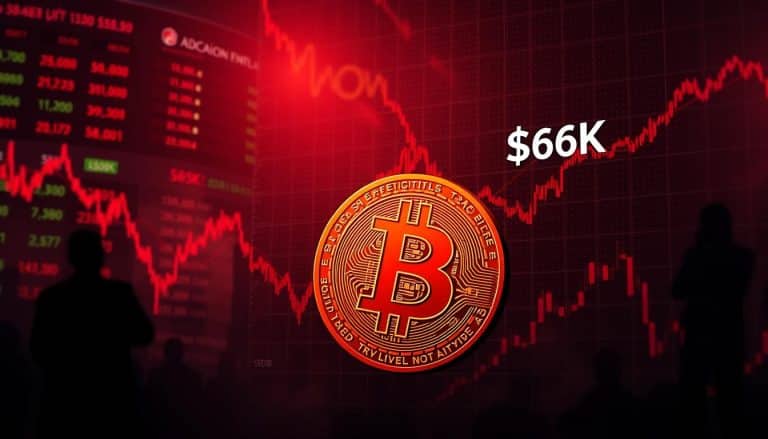Xrp Liquidity And Price Correlation
The enigmatic world of cryptocurrency can be as perplexing as it is rewarding – and XRP, the third-largest cryptocurrency by market capitalization, is no exception. While many investment opportunities come with high risk and even higher reward potential, investing in XRP has become increasingly popular amongst those seeking to maximize their returns. But what does it take to successfully navigate the complex relationship between liquidity and price when trading XRP? In this article, we will explore this correlation in detail. From an analysis of factors that influence XRP liquidity to identifying potential risks for investors; this comprehensive review provides an in-depth look at what you need to know about XRP liquidity and price correlation.
Overview of XRP
The symbiotic relationship between liquidity and price of XRP has long been known to exist. XRP is a digital asset released in 2012 by Ripple Labs, which uses blockchain technology and trust networks to facilitate international payments. It is the third largest cryptocurrency after Bitcoin and Ethereum, with a current market capitalization of over $13 billion. As an open source payment platform, XRP aims to provide fast, secure, and reliable cross-border payments services for financial institutions. Its unique features include low transaction fees, high scalability and quick transaction speed that make it very attractive for use in global banking operations. Moreover, its decentralized network allows users to securely transfer funds without having to rely on any third parties or intermediaries.
These features have contributed significantly towards increasing the liquidity of XRP compared to other cryptocurrencies, as well as promoting its widespread adoption among banks and financial institutions across the globe. This increased demand for XRP has resulted in an increase in its market value as well as its liquidity levels in the market. In turn, this has led to a positive correlation between liquidity levels and the price of XRP over time – indicating that higher levels of liquidity are associated with higher prices for this cryptocurrency asset. Consequently, it can be argued that maintaining high levels of liquidity is necessary for ensuring stability in the value of XRP over time.
The Relationship Between Liquidity and Price
Exploring the interplay between supply and demand, this article examines the relationship between liquidity and price. Liquidity is a critical factor in determining the market value of a cryptocurrency such as XRP; it affects both its price volatility and overall market capitalization. The relationship between liquidity and price can be observed in three ways: through alternative exchanges, liquidity networks, and transaction fees.
Alternative exchanges are those that trade digital assets other than Bitcoin or Ethereum; they provide an additional source of liquidity for XRP, resulting in increased trading volumes which can have a positive impact on its price. Liquidity networks refer to decentralized exchanges that allow users to buy or sell XRP without relying on centralized intermediaries. These platforms often offer lower transaction fees than traditional exchanges, making them attractive to traders who want to maximize their profits by minimizing their expenses. Finally, transaction fees play an important role in the relationship between liquidity and price; as more people use XRP for payments or remittance services, its liquidity increases which leads to higher prices due to increasing demand.
This analysis of the relationship between liquidity and price reveals several insights into how these two factors influence each other. Moving forward, we will discuss some of the key factors that influence XRP’s liquidity so that traders can better understand how these elements interact with each other when determining prices in the cryptocurrency markets.
Factors that Influence XRP Liquidity
Unravelling the intricate interplay between supply and demand, this article delves into the determinants of XRP liquidity that affect its price volatility and market capitalization. Liquidity sources such as institutional investors, venture capitalists, public exchanges, and over-the-counter (OTC) trading desks are driving forces in determining the volume of XRP tokens available on the market. Factors such as investor sentiment, geopolitical events, regulations or restrictions imposed by governments can also have a significant impact on liquidity levels. Market movements due to speculation can cause rapid changes in the short term; however, the long-term effects are generally more stable depending on broader economic trends. These factors are important to consider when analyzing XRP liquidity and its effect on price volatility. With an understanding of these dynamics at play, one can gain insight into how various influences shape XRP’s liquidity index.
The XRP Liquidity Index
Analyzing the dynamic relationship between supply and demand, the XRP Liquidity Index offers insight into how various factors influence the availability of tokens on the market. The index is produced by Ripple stakeholders who use a combination of liquidity mining and other incentives to increase the number of tokens available for trading. Furthermore, this provides data-driven evidence that can be used to determine how much liquidity is available within specific markets and which markets have higher levels of liquidity than others.
The index also provides an indication of where there are any imbalances between buyers and sellers in terms of their ability to trade XRP tokens. This allows users to identify areas where additional liquidity may be needed or where there may be too much liquidity already present in certain markets. By understanding these trends, Ripple stakeholders are better equipped to make decisions about their strategies for increasing or decreasing the amount of XRP tokens available on exchanges. With this knowledge, they can then adjust their policies accordingly in order to maximize profitability while ensuring adequate token liquidation rates for all participants. In doing so, they can ensure that price movements remain stable over time as well as provide a more accurate picture of XRP’s overall value over time. As such, it is highly beneficial for Ripple stakeholders to track changes in XRP’s liquidity index on a regular basis in order to effectively manage their portfolio. Through careful analysis of this data, they can better understand how different factors affect both supply and demand and thus create more favorable conditions for successful trades involving XRP tokens going forward.
The Impact of Liquidity on Price
The impact of liquidity on price is an important factor to consider when evaluating the performance of a given asset. There is a strong positive correlation between increased liquidity and higher prices, as well as a negative correlation between low liquidity and lower prices. This is due to the fact that higher levels of liquidity allow more efficient trading with less risk, while lower levels may lead to large price swings and other inefficiencies that can have adverse effects on market value.
Positive correlation between liquidity and price
Examining the relationship between liquidity and price in XRP reveals a positive correlation. Liquidity metrics such as daily volume, bid-ask spread, open interest, market depth, and market maker activity are all positively correlated with the price of XRP. When these indicators increase, it suggests increased demand for XRP which may result in an increase in its price. Additionally, network effects play a role in the positive correlation between liquidity and price. As more participants enter the market with buy or sell orders they help to create a more liquid environment that can drive up prices due to increased investor confidence. This is also true for traders who are looking for greater liquidity when entering or exiting positions since higher liquidity reduces transaction costs while simultaneously increasing the chances of finding buyers or sellers at desirable prices. Thus it is clear that there is a strong connection between XRP’s liquidity and its pricing which helps explain why we see an overall positive correlation between them .and the overall value of XRP.
Negative correlation between liquidity and price
Investigating the relationship between liquidity and price reveals a negative correlation in certain market conditions. Investors should consider that when liquidity decreases, prices can become more volatile and may experience sharp fluctuations. This can have an impact on arbitrage opportunities and present risks for investors who are looking to buy or sell XRP tokens at a specific price.
- Liquidity levels can affect the speed of transactions
- Low liquidity may cause slippage in orders
- High volatility due to low liquidity
- Arbitrage opportunities become limited
The potential for predicting future prices based on the current level of liquidity is another factor that must be considered when trading XRP tokens. Therefore, understanding the dynamics of how changes in market conditions can affect liquidity is critical for making informed investment decisions.
Potential for Price Prediction Based on Liquidity
The correlation between liquidity and price is a well-studied phenomenon in the world of cryptocurrency. While short-term price movements may be difficult to predict with accuracy, long-term trends can often be traced back to fluctuations in liquidity. This paper will explore the potential for using liquidity as a tool for predicting future prices in both the short and long term. It will evaluate various methods for determining how changes in liquidity affect price, and investigate whether or not these methods are reliable enough to make accurate predictions.
Short-term price movements
Recent studies have found that XRP’s short-term price movements are strongly correlated with its liquidity. This correlation has been observed between the supply and demand of XRP tokens, as well as the risk/reward factor associated with trading it.
The relationship between liquidity and price can be seen in various ways:
- Supply and Demand: When there is an increase in demand for XRP tokens, the price increases due to a higher number of buyers relative to sellers. Conversely, when there is a decrease in demand for XRP tokens, the price decreases due to a lower number of buyers relative to sellers.
- Risk/Reward: As the liquidity of XRP increases, more investors are willing to take on greater risks in order to reap larger rewards from trading it. This increased risk leads to higher prices for XRP tokens as investors are willing to pay more for potential gains than losses.
It is clear that short-term price movements for XRP are directly influenced by its liquidity levels; this insight can be used by traders who wish to capitalize on these trends when making decisions about their investments. With this understanding, we can move onto looking at how long-term price movements may be affected by changes in liquidity levels.
Long-term price movements
Analyzing the effects of long-term liquidity changes on XRP token prices can be a useful tool for investors looking to make informed decisions about their investments. This is because such a study allows investors to identify patterns and trends in the market, as well as assess the potential for wealth accumulation or liquidity creation over time. By doing so, investors are able to determine whether XRP is an appropriate asset that can generate returns over an extended period of time. In addition, by studying the correlation between liquidity and price changes, investors can also formulate strategies to maximize their profits from their investments in XRP tokens. Thus, understanding long-term price movements is essential for making successful investments in XRP tokens. Transitioning into the next section, we will discuss the advantages of investing in XRP for investors.
Advantages of XRP for Investors
Investing in XRP provides a unique opportunity for investors, offering the potential to increase liquidity and profitability. Some of the advantages that make XRP an attractive investment option include:
- Liquidity Effects – XRP is among the world’s most liquid cryptocurrencies, allowing investors to easily purchase and sell large amounts of this digital asset without adversely affecting its market price.
- Trading Volume – The high trading volume associated with XRP allows investors to quickly take advantage of any changes in its price or market sentiment.
- Increased Accessibility – In addition to traditional exchanges, XRP can be purchased through peer-to-peer networks and decentralized exchanges as well, giving more investors access to this digital currency than ever before.
By investing in XRP, investors have access to a wide range of benefits that can help them realize significant returns on their investments over time. However, these potential gains come with certain risks that need to be considered before making any decisions regarding investing in this digital asset.
Potential Risks of Investing in XRP
While investing in any asset carries with it inherent risks, XRP is no exception and should be carefully considered before investing. One of the primary concerns of potential investors is liquidity pooling. XRP has a relatively small market capitalization compared to other assets, which makes it vulnerable to sudden price changes due to large purchases or sales by a single investor or group. This could lead to significant losses for buyers who are ill-prepared for such events. Additionally, market manipulation can also be a concern when investing in XRP. Due to its smaller market size, it can be more easily manipulated by malicious actors looking to take advantage of unsuspecting investors. Consequently, prospective investors should keep these potential risks in mind and perform their own due diligence before committing funds into XRP investments.
Frequently Asked Questions
What other cryptocurrencies can I invest in?
When investing, it is important to consider various strategies and portfolio diversification. There are many other cryptocurrencies available for investment, such as Bitcoin, Ethereum, Litecoin, and Cardano. Evaluating the risks and potential rewards of each option can help ensure a successful investment strategy.
How do I purchase XRP tokens?
Navigating the cryptocurrency markets can be likened to a treacherous journey; investing strategies are key to avoiding market volatility. To purchase XRP tokens, consider researching reputable exchanges that offer options for buying or trading them. Evaluate fees, liquidity and security when making your decision.
Are XRP tokens subject to taxes?
Taxes on XRP tokens may vary depending on the applicable tax rates in a jurisdiction and regulatory compliance. Investors should assess their individual situation to ascertain any potential tax obligations.
How does XRP compare to other digital currencies?
Ripple mining and market speculation have both been major factors in determining the performance of XRP compared to other digital currencies. It is essential to analyze these aspects carefully before drawing conclusions on how XRP stacks up against its peers.
Is it safe to store XRP tokens in an online wallet?
Storing XRP tokens in an online wallet presents a risk of buying safety and liquidity. It is important to understand the risks associated with keeping digital assets online, such as potential security vulnerabilities and market volatility. A thorough assessment should be conducted before making any investments.







 Bitcoin
Bitcoin  Ethereum
Ethereum  Tether
Tether  XRP
XRP  Wrapped SOL
Wrapped SOL  USDC
USDC  Lido Staked Ether
Lido Staked Ether  TRON
TRON  Dogecoin
Dogecoin  Cardano
Cardano  Figure Heloc
Figure Heloc  Bitcoin Cash
Bitcoin Cash  Wrapped stETH
Wrapped stETH  WhiteBIT Coin
WhiteBIT Coin  Wrapped Bitcoin
Wrapped Bitcoin  Wrapped eETH
Wrapped eETH  USDS
USDS  Chainlink
Chainlink  Binance Bridged USDT (BNB Smart Chain)
Binance Bridged USDT (BNB Smart Chain)  LEO Token
LEO Token  WETH
WETH  Zcash
Zcash  Monero
Monero  Stellar
Stellar  Coinbase Wrapped BTC
Coinbase Wrapped BTC  Sui
Sui  Litecoin
Litecoin  Ethena USDe
Ethena USDe  Hyperliquid
Hyperliquid  Avalanche
Avalanche  Shiba Inu
Shiba Inu  Canton
Canton  Hedera
Hedera  World Liberty Financial
World Liberty Financial  sUSDS
sUSDS  Toncoin
Toncoin  USDT0
USDT0  Dai
Dai  Cronos
Cronos  Uniswap
Uniswap  PayPal USD
PayPal USD  Polkadot
Polkadot  Mantle
Mantle  Ethena Staked USDe
Ethena Staked USDe  USD1
USD1  Pepe
Pepe  Rain
Rain  MemeCore
MemeCore